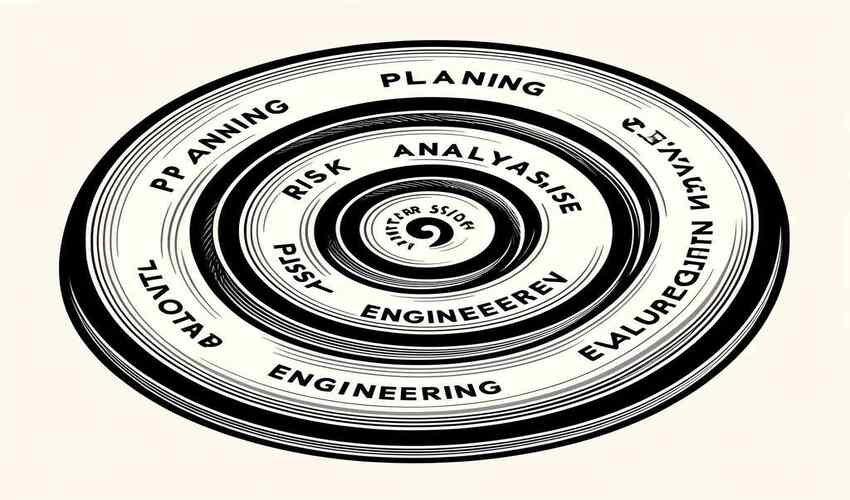The spiral model is a highly regarded methodology in software development. It provides both flexibility and effective risk management throughout the entire project life cycle. To successfully implement an iterative approach, it is crucial to understand the different stages involved in the spiral model. This article will discuss all spiral model phases and examine why they are important in software engineering.
The Spiral Model Phases
The spiral model consists of four major Spiral Model Phases: planning, risk analysis, engineering, and evaluation. Each phase encompasses specific elements that play a significant role in the project’s overall success.

Phase 1: Planning
The project’s objectives and requirements are established during the planning stage, and a preliminary project plan is created. This phase also involves identifying stakeholders, setting project objectives, and defining the scope of activities. By carefully planning the project, teams can ensure they stay on track to achieve their goals and deliver a successful product.
Phase 2: Risk Analysis
The risk analysis phase is dedicated to identifying potential risks and challenges and developing strategies to mitigate them. This phase also involves assessing the impact of risks on the project schedule, budget, and quality. Through proactive risk management, teams can effectively address potential disruptions and enhance project execution efficiency.
Phase 3: Engineering
The engineering phase is where the actual development work takes place continuously. This stage involves designing, coding, testing, and integrating software components. By breaking down the development process into smaller iterations, teams can quickly adapt to changing requirements and deliver added value.
Phase 4: Evaluation
The evaluation phase focuses on assessing the completed work and gathering feedback from relevant stakeholders. This phase includes reviewing, testing, and ensuring quality assurance to ensure the software meets the desired standards.
What is the importance of the spiral model phase for software development?
The spiral model phase plays a critical role in ensuring the success of software development projects. Through a structured development process, the teams can handle risks efficiently, adapt to changes in requirements, and deliver quality software products on time and within budget.
Which Spiral Model projects are the most suitable?
The spiral model is particularly effective for projects that involve a high level of uncertainty and complexity. It is especially well-suited for large-scale projects where requirements are likely to change and evolve over time.The spiral model’s inherent flexibility renders it an optimal choice for projects that demand a considerable degree of adaptability, enabling seamless integration of changes at every stage of development.
Sum Up
Any software developer needs to understand the Spiral Model Phases of a circular model. By following the spiral model’s iterative and risk-driven approach, teams can optimize their development process and increase the chances of project success. Through careful planning, risk analysis, software development, and evaluation of work carried out, teams can deliver quality products that meet the needs of their stakeholders.

















Leave a Reply